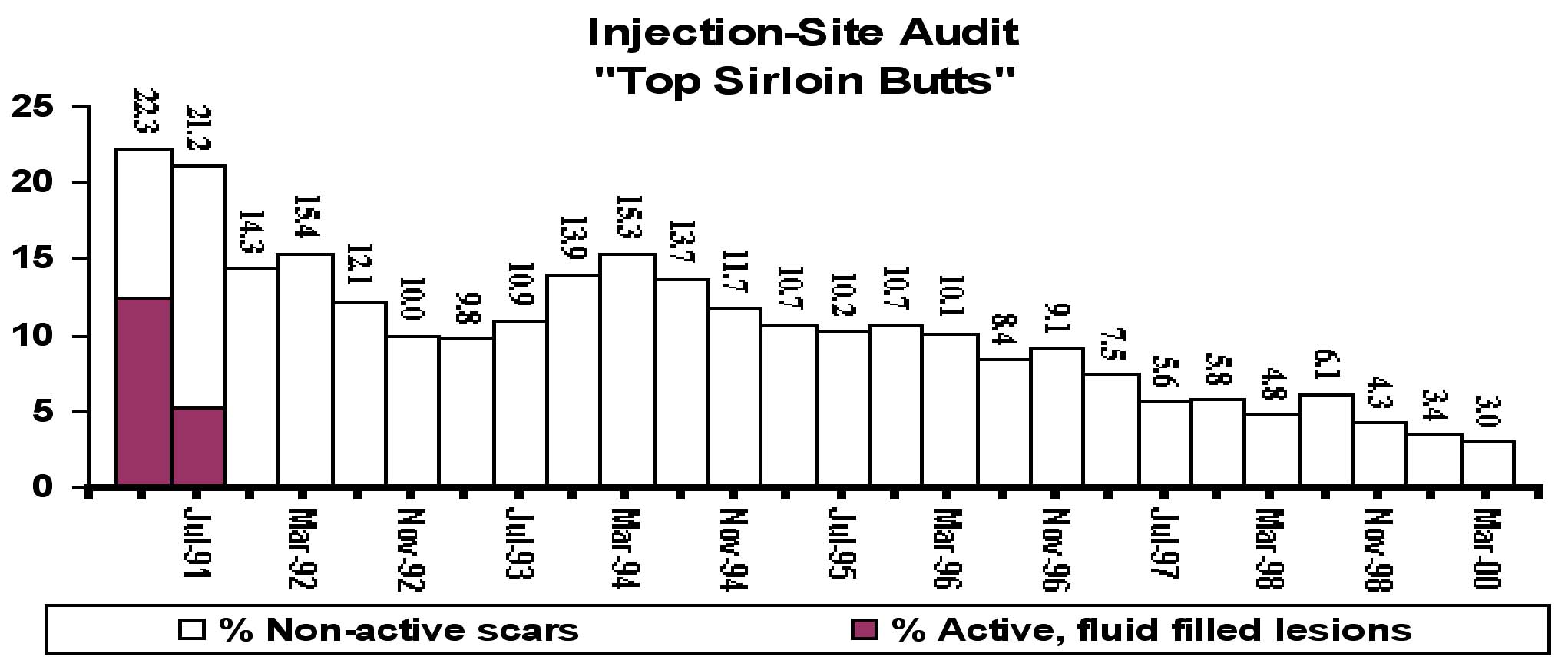
You've reached the Virginia Cooperative Extension Newsletter Archive. These files cover more than ten years of newsletters posted on our old website (through April/May 2009), and are provided for historical purposes only. As such, they may contain out-of-date references and broken links.
To see our latest newsletters and current information, visit our website at http://www.ext.vt.edu/news/.
Newsletter Archive index: http://sites.ext.vt.edu/newsletter-archive/

Beef Quality Corner -- Injection Site Progress
Livestock Update, June 2000
Bill R. McKinnon, Extension Animal Scientist, Marketing, Virginia Tech
One of the first widely publicized issues related to beef quality assurance was the injection site lesion problem. Steak cutters, retailers and consumers were discovering disgusting fluid filled lesions in cuts from the top sirloin as a result of injections given to cattle in the rump. After widely informing the various segments of the industry about the need to change vaccination practices, there was a significant drop in the number of active fluid filled lesions.
It was largely assumed that the active lesions were the result of injections given closer to the time of animal harvest. Many of these active blemishes were probably the result of vaccinations at feedlot processing. The clostridial vaccines were primarily indited as the agent most often responsible for the worst lesions. Work at Colorado State indicated that several other products injected such as antibiotics, vitamins, and saline could create injection site blemishes up to a year after injection. This work also found that not only are these blemishes unsightly and unappetizing, they impact the tenderness of the surrounding muscle.
The beef industry has adopted the stance that all injections should be administered in the neck area in front of the shoulder blade. If the animal health project label information suggests either a subcutaneous or intramuscular injection, subcutaneous is the preferred route. If injections do create damage in the neck area, this is certainly a less valuable region of the carcass and undergoes trimming and grinding. Certainly, in many situations, it requires more effort to always give vaccinations in the neck as opposed to the rump or round. Beef producers must adopt the philosophy that they are food producers and under the hide of that calf, yearling, or cow is a product that will find its way to someone's plate.
Table. 1.

Table 1 illustrates that the beef industry has made significant progress in reducing the incidence of injection site lesions in the top sirloin. The last two audits still indicated a 3% failure rate. Since there have been no active lesions in several years, it can probably be assumed that this 3% is problem at the cow/calf and stocker cattle sectors. This has to either be a problem of folks not being informed or worse, simply not caring about the final food product being produced. A producer comment recently heard at a beef quality assurance educational meeting in Virginia suggested that the producer thought injection site damage was the feedlot or packer's problem. If each sector of the industry, from retailer to cow/calf, expects to receive income from beef sales, everyone has a stake in beef quality assurance.